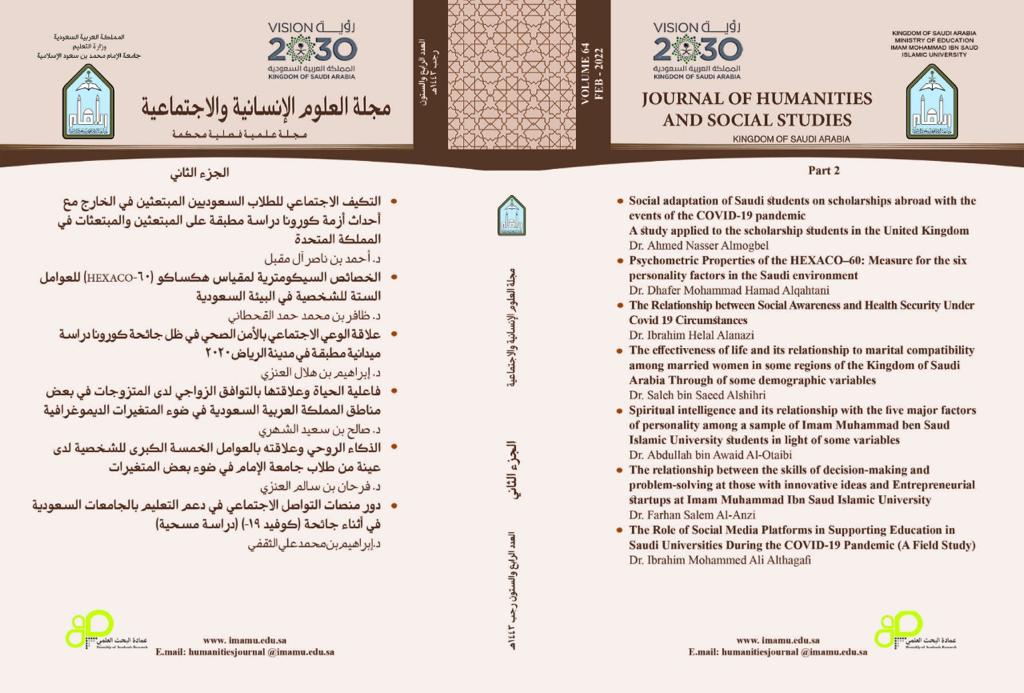The effectiveness of life and its relationship to marital compatibility among married women in some regions of the Kingdom of Saudi Arabia Through of some demographic variables
Keywords:
Marital Adjustment, Effectiveness of LifeAbstract
The current study aimed to uncover statistically significant differences between married women in both marital adjustments, the effectiveness of life according to the years of marriage, the level of education. It aimed to identify the association between the two variables: marital adjustment and life effectiveness for married women. In addition, it aimed to discover how dimensions of life effectiveness contribute to the prediction of marital adjustment. The study sample consisted of (100) women located in Riyadh, Makkah, Taif, Najran, and Jizan cities. The women's ages ranged between (30 and 49) years, with an average age of (34) years; and a standard deviation of (4.11) years. They consisted of teachers, homemakers, and administrators in various institutions. A life-effectiveness instrument ( LES) was applied to them on the Internet; originally prepared by Richards, Ellis, & Neill; (2002), and translated and codified by Shams; and Al-Sukari (2008), and the marital adjustment scale by Iman Al-Daa (2002). The results revealed that there were no statistically significant differences in the dimensions of the effectiveness of life and the dimensions of marital adjustment between married women according to the years of marriage. The study revealed the existence of a statistically significant positive relationship between the effectiveness of life and marital adjustment. The study also revealed the possibility of predicting through independent variables (self-confidence and self-efficacy) on the overall degree of the marital adjustment test for those who are married.




